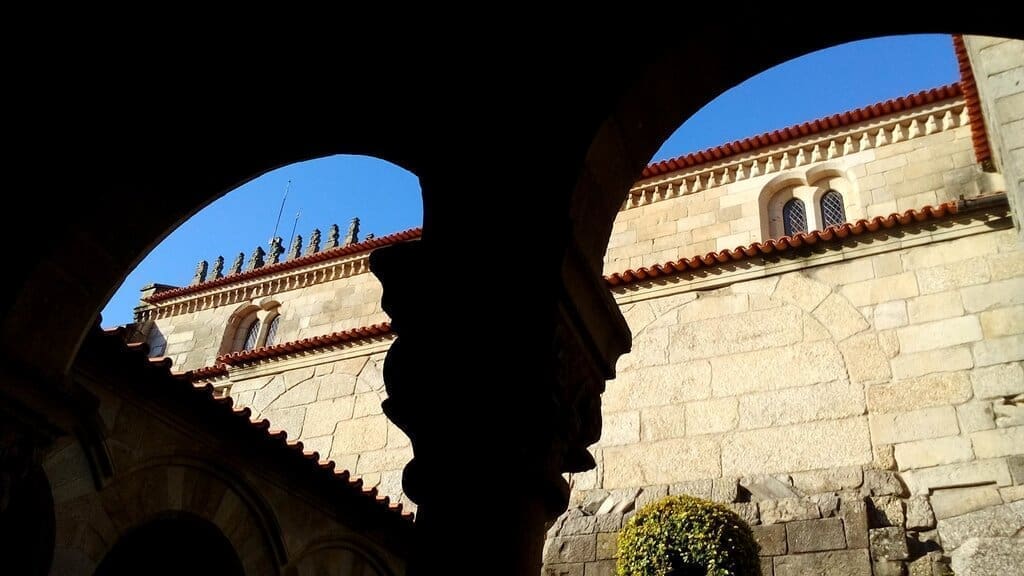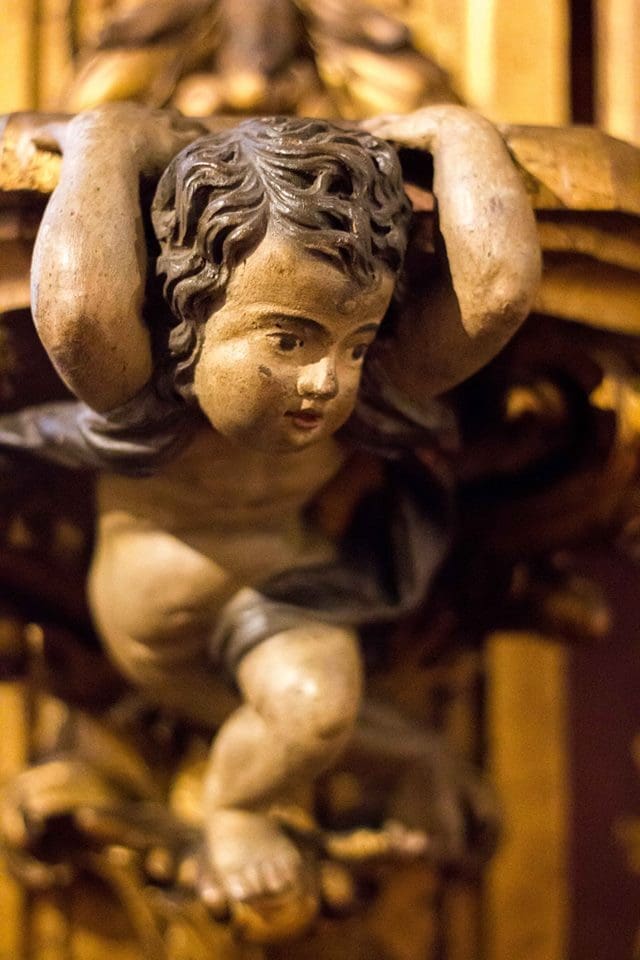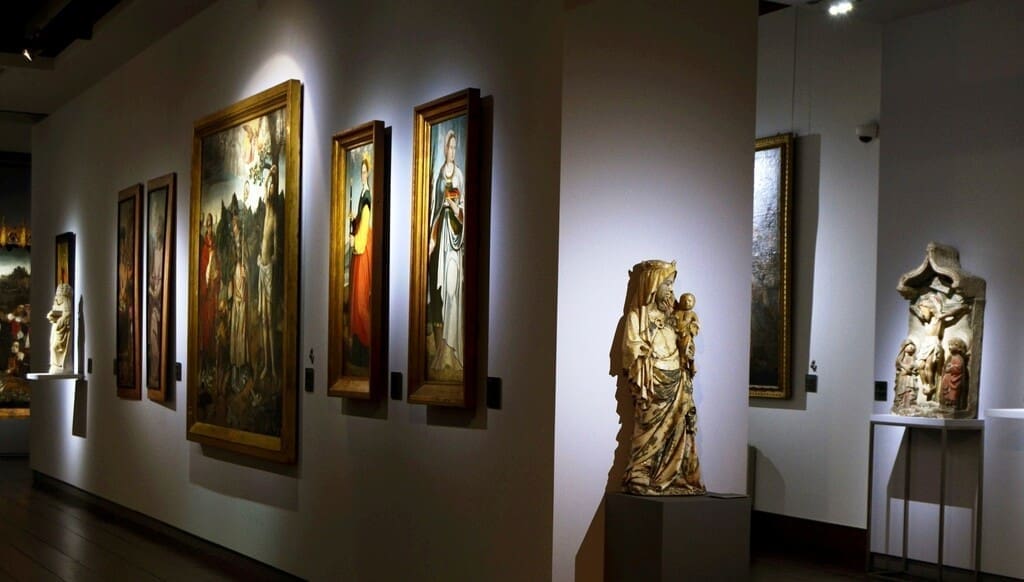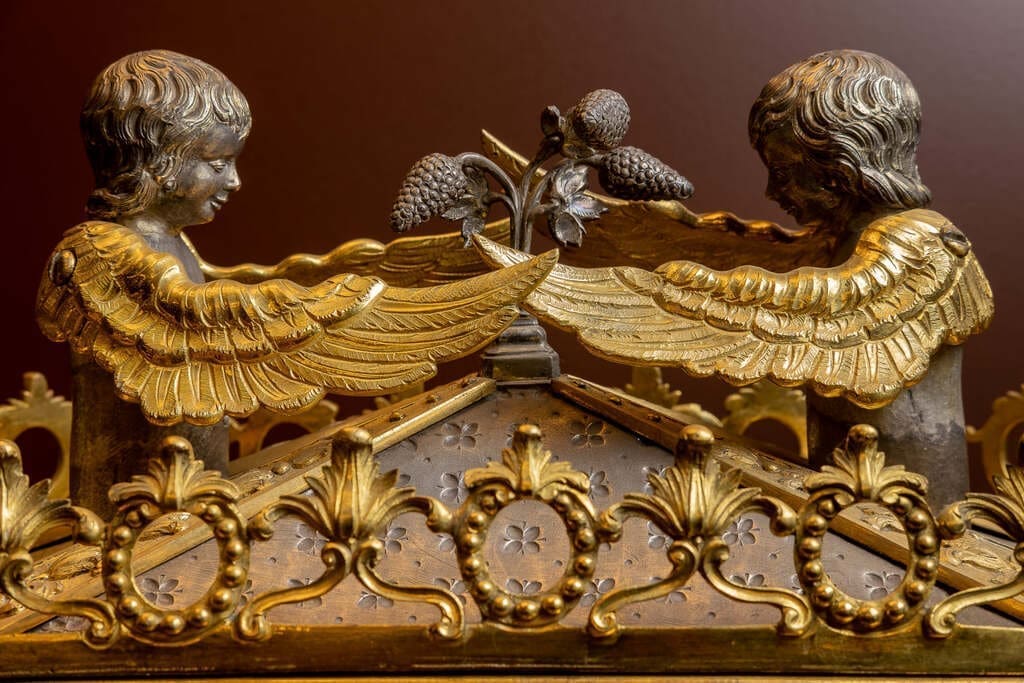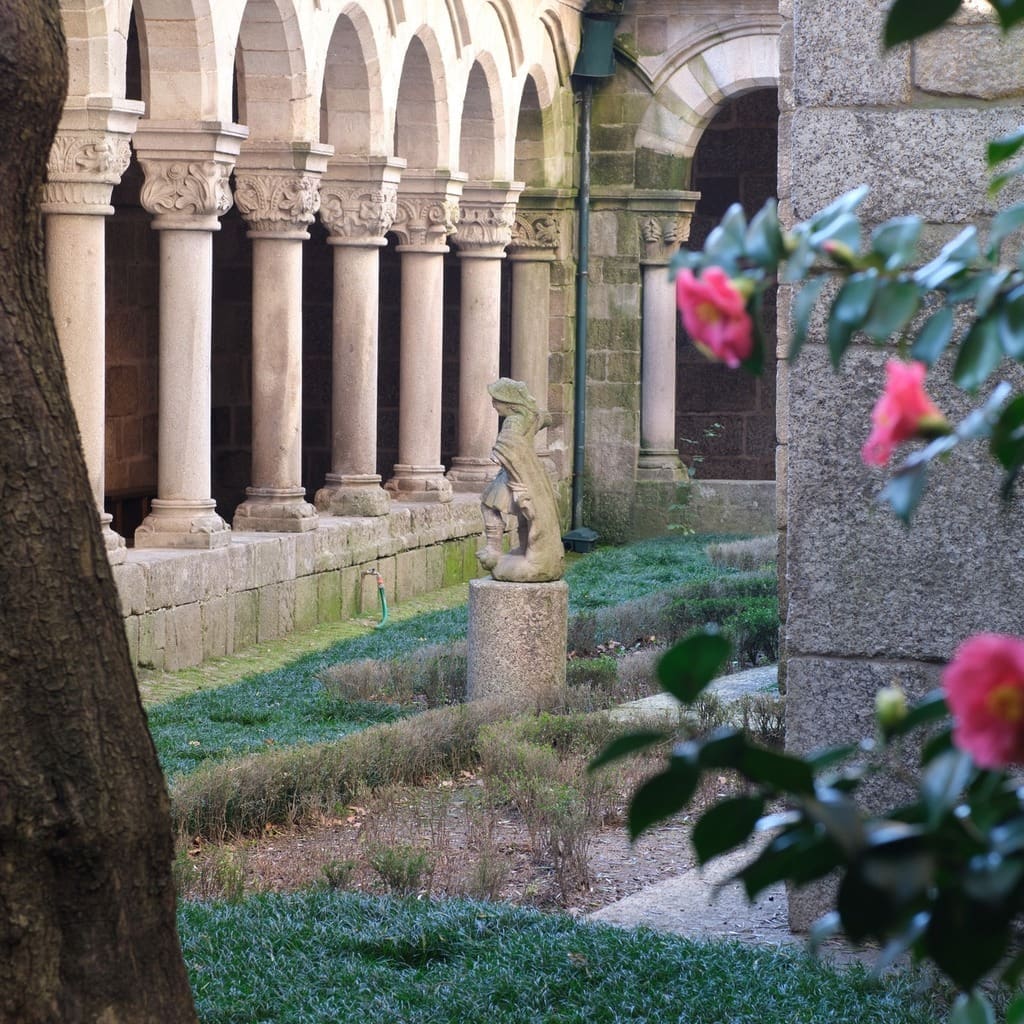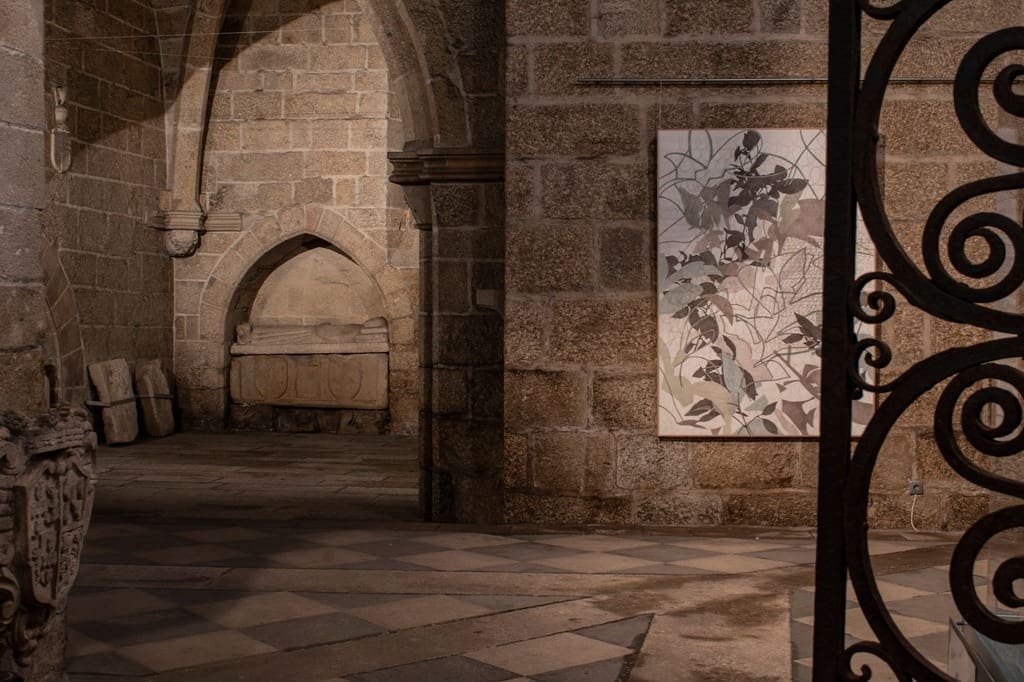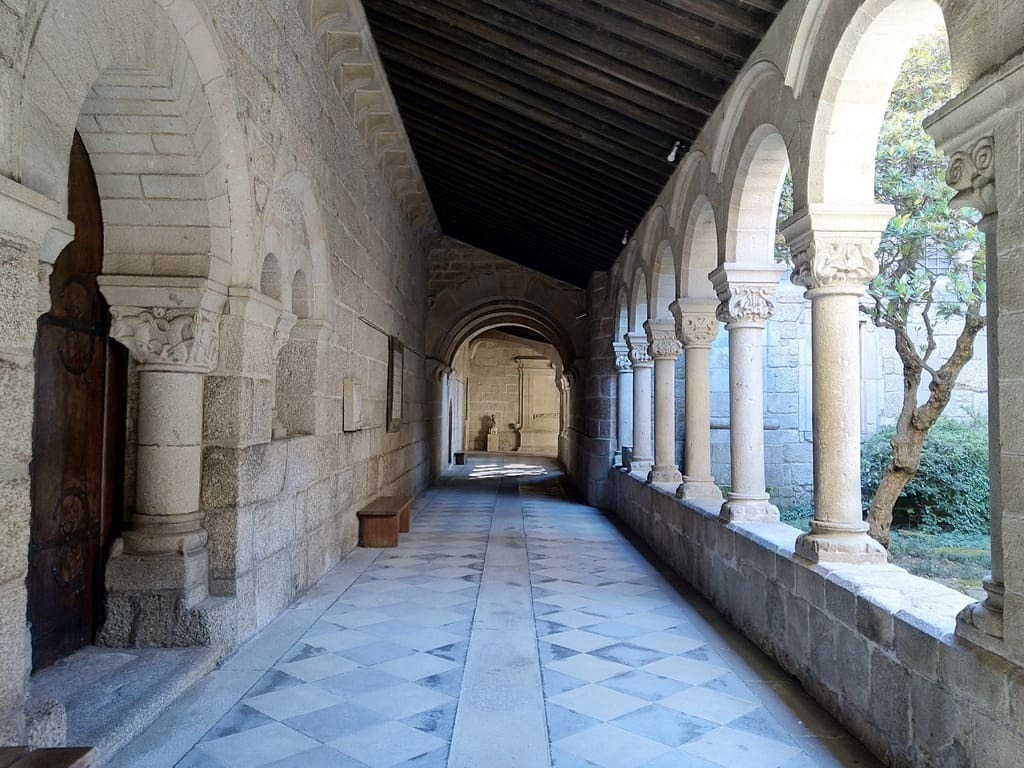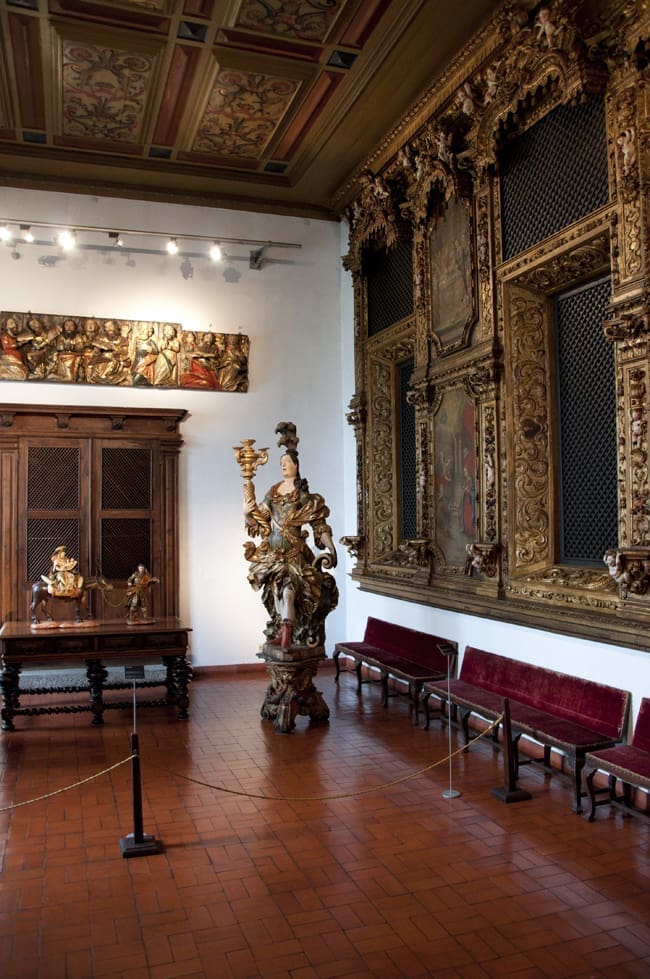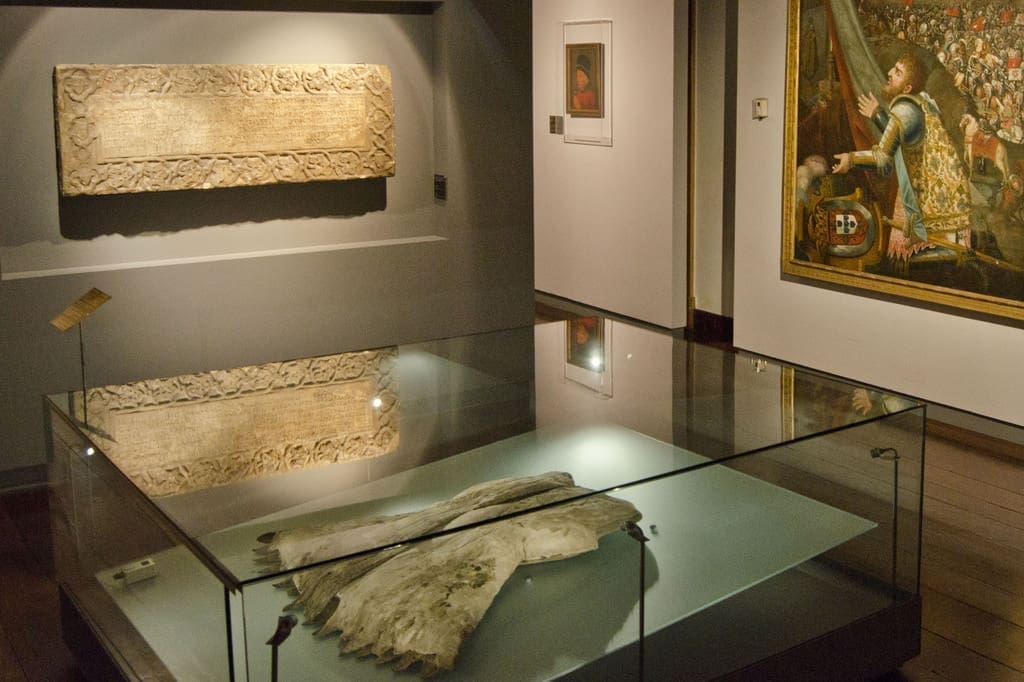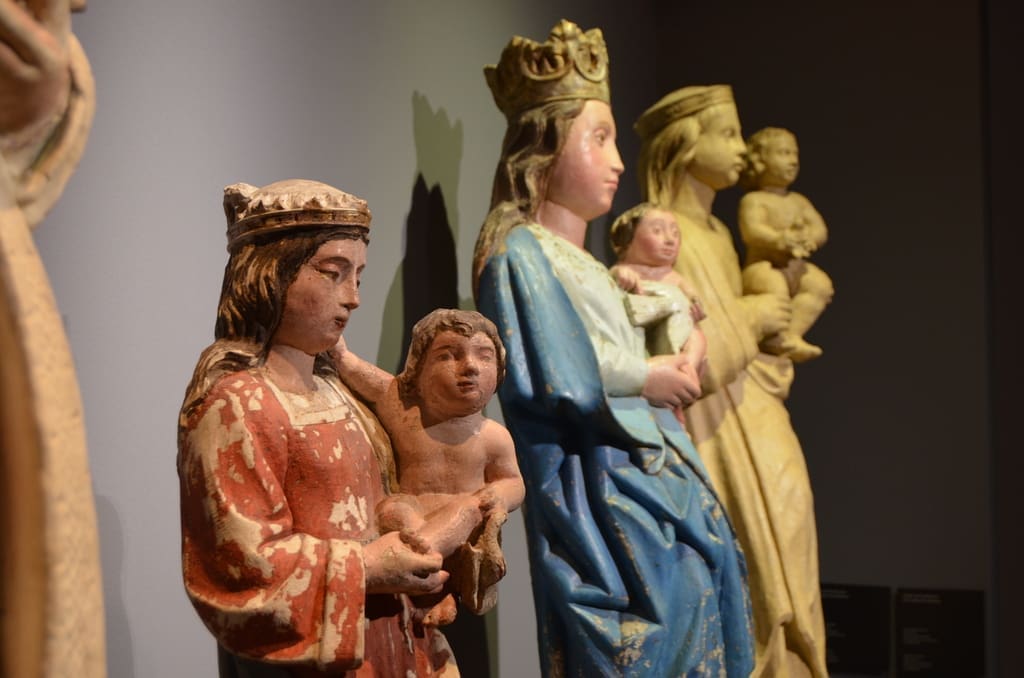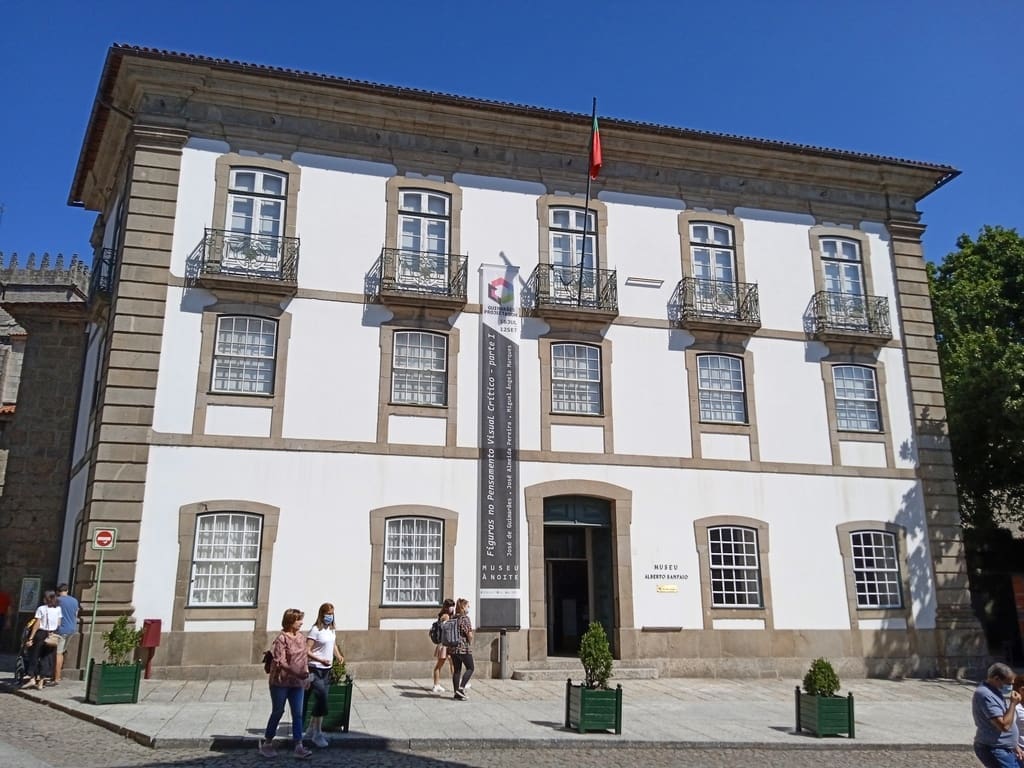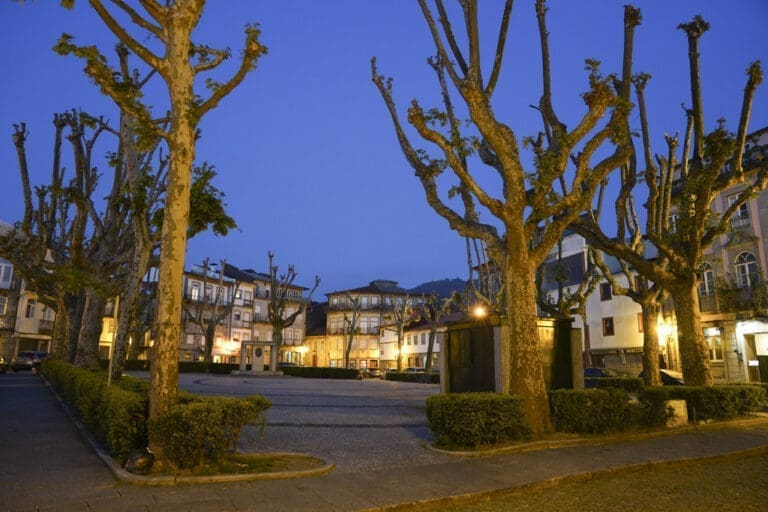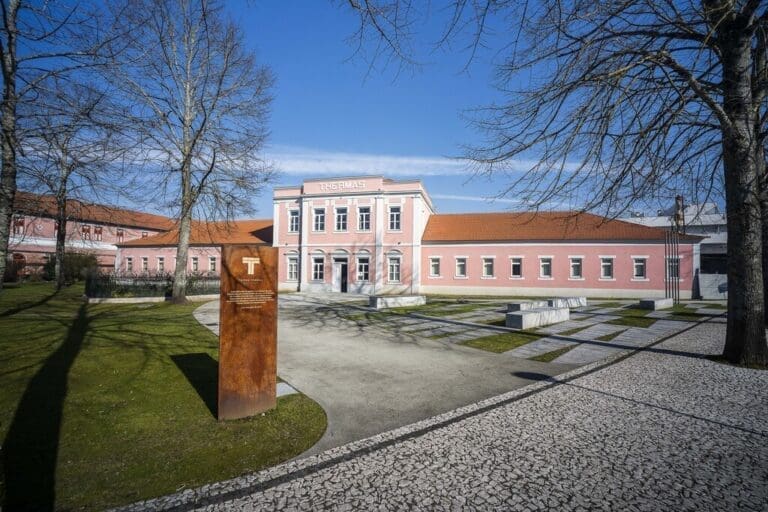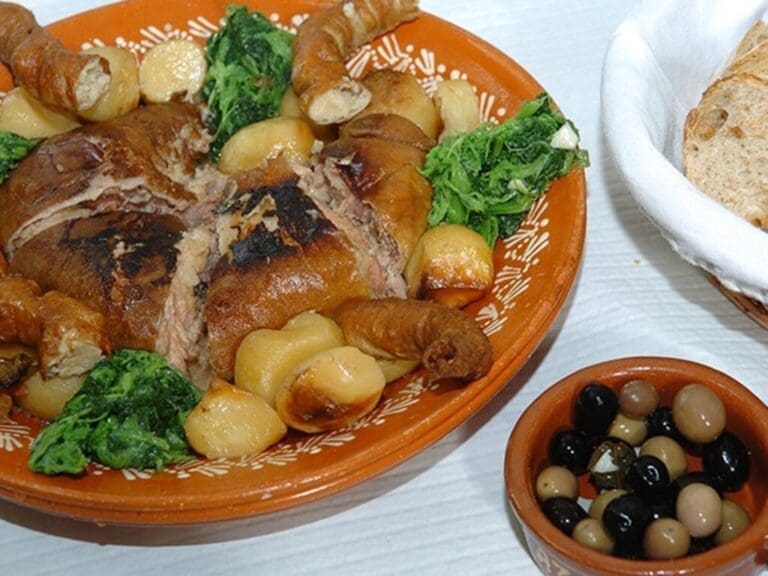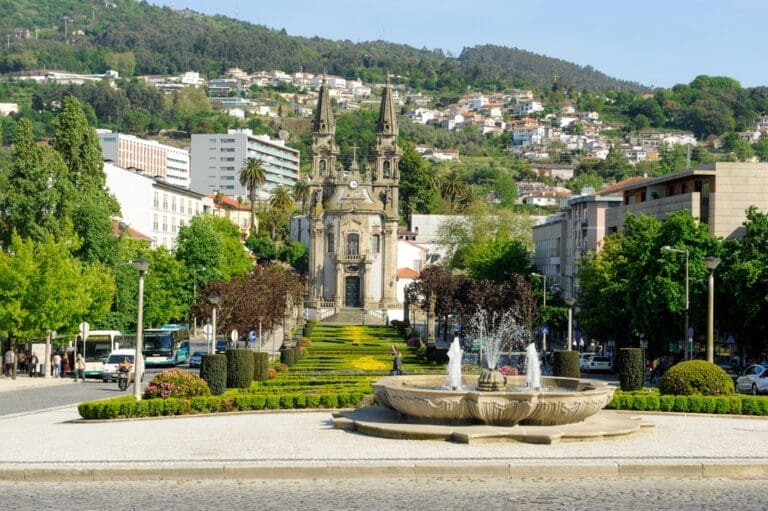The Museum occupies the place where, in the 10th century, Countess Mumadona Dias ordered the construction of a monastery. The city of Guimarães grew around it. In the 12th century, the monastery gave way to a Collegiate Church, dedicated to Santa Maria and, later, to Nossa Senhora da Oliveira.
The Museum was created in 1928 to house the art collection of the extinct Collegiate Church of Nossa Senhora da Oliveira and other churches and convents in Guimarães. The Museum is spread over three spaces that belonged to the Collegiate Church: the Cloister, the Priory House and the Chapter House.
Its collection is predominantly of local origin and ancient sacred art, with a good collection of goldsmithing, textiles, sculpture, painting and carving. The collection of goldsmithing is among the best in the country, with highlights including the Romanesque chalice of D. Sancho I, the image of Santa Maria de Guimarães (13th century), the processional crosses and the magnificent Gothic altarpiece of gilded silver depicting the Nativity, from the end of the 14th century. Another unique piece that deserves a special visit is the doublet worn by D. João I in the battle of Aljubarrota, in 1385.

 Guimarães, Northern Portugal
Guimarães, Northern Portugal